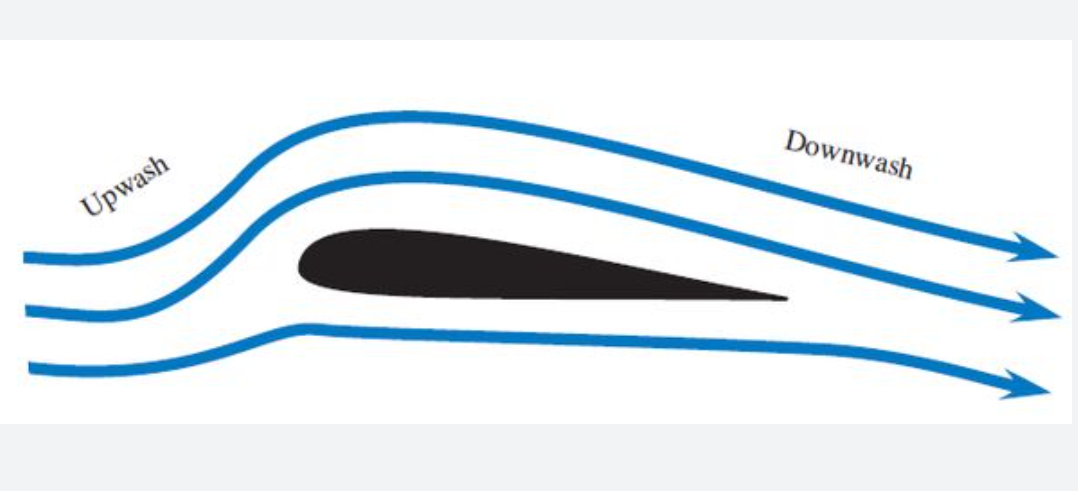Upwash

Upwash refers to the upward flow of air in front of the leading edge of a wing or airfoil. It's a crucial aerodynamic phenomenon that, along with downwash, influences lift and drag. Upwash is also a concept used in bird migration, where birds in formation flight can benefit from the upwash generated by the wings of birds ahead of them.
Elaboration
Airfoil and Airflow: When an aircraft moves through the air, the leading edge of its wings (or other airfoils) causes the air flow to split. Some air flows upward, creating upwash, while the remaining air is forced downward, creating downwash.
Lift and Drag: Upwash and downwash, combined with the angle of attack of the airfoil, contribute to the generation of lift and also to the increase in drag known as induced drag.
Wingtip Vortices: Wingtip vortices, generated at the trailing edges of wings, contribute to both upwash and downwash.
Formation Flight: Birds in V-formations often position themselves to capitalize on the upwash created by the birds ahead of them, potentially reducing drag and increasing efficiency.
Helicopters: Downwash from helicopter rotors can compress against the ground, increasing lift, and also create turbulence and environmental effects.
